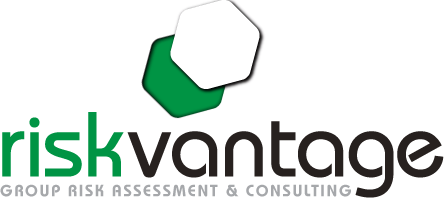Definition of Honeycomb (verb): To Permeate; To Penetrate in all Parts. (noun): Any structure of hexagonal cells with many units.
Background:
Currently, it is common for groups to be evaluated and priced based on the outdated and overly simplistic approach using underwriting factors such as industry codes(SIC) and demographics. SIC factors have been used for years as a key component of pricing formulas despite the fact that they have proven to have extremely limited ability to predict costs for a particular employer group. Industry factors may prove useful in a handful of cases. For instance, coal mining is likely to be a poor risk. However, in most cases, there is such variation in risk among employers in any given industry the factors fail to provide predictive power for a specific employer.
The Honeycomb Risk Algorithm evaluates the unique risk profile for an employer group. Even when available, recent claims history is not a reliable predictor for smaller groups. The RiskVantage team has used their extensive experience leading underwriting and analytics departments of large health plans to develop an algorithm that allows us to look behind the curtain and shed light on the characteristics of the group that matter.
Your decision to move to self-funding should not be made lightly. The decision is a difficult one given the limited information at your disposal. RiskVantage gives you the opportunity to close this information gap and learn as much about your employer risk profile as possible.
The savings potential is significant. 81% of large employers are self-funded today. Self-funding of smaller groups is growing rapidly. As a smaller group you have the chance to enjoy the same financial advantages that the big groups do. You just need to take the extra step to ensure your group is a good fit.
Don’t you owe it to yourself to make a small investment with RiskVantage to fully explore this opportunity? The rewards can be great!!
The Algorithm:
Currently, RiskVantage utilizes 42 different attributes performing a deep dive to assess the risk profile of the employer. Together these 42 attributes paint the picture of the unique risk profile of the group in a manner than the oversimplified demographic and industry factors simply cannot. These factors have been shown to correlate to future claims expense by getting to the bottom of the underlying composition of the employer. RiskVantage looks to provide a long term indicator to ensure that self-funding is viable option for the employer in the long run.
The 42 attributes evaluated break down into these six main categories of risk:
• Employer stability
• Employee composition
• Plan administration
• Employee benefits
• Approach to wellness
• Benefit utilization
The Process:
RiskVantage will spend time with each employer to get to know the unique attributes of your group. Typically, the RiskVantage team will spend 1 to 1 ½ hours with the employer to conduct an informal interview and collect pertinent facts from the employer. This interview can be conducted in person or via phone at the employer’s convenience. Commonly, a human resource manager or financial officer of the employer can readily answer the questions or easily retrieve the data. Additionally, RiskVantage will request an enhanced census that contains some additional data elements not normally included in the census routinely provided to carriers but can be completed with little difficulty.
The current process used by carriers is so narrow in focus it fails to capture the inherent risk of the employer. Some of the questions we will ask may seem odd or unrelated to health insurance costs. But that’s the point. While seemingly unrelated, the attributes measured by the algorithm have been found to correlate to health benefit costs. By the end of the process the employer personnel start to see the connection and are eager to hear the results of the algorithm and are confident in the findings. RiskVantage is able to provide a response to employers within 3 business days of collecting all the information.
The output of the algorithm will be shared indicating whether the risk profile of the employer is a good fit for self-funding or alternate funding or not. For many employers the recommendation will be to not pursue self-funding. The report provided will illustrate how the group compares to other employers in each of the six main categories. RiskVantage will also provide recommendations of changes that the employer can make to mitigate their risk.




